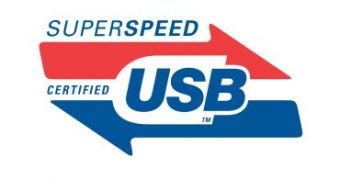The SuperSpeed USB 3.0 standard took over the market very quickly, even though USB 2.0 was entrenched deeply into all faces of IT. The reason was simple: the increase by a factor of 10 in transfer speeds.
Unfortunately, not long afterwards, Intel introduced the Thunderbolt technology, which works at 10 Gbps and can go to 100 Gbps eventually.
Fortunately for the USB Implementers Forum, Thunderbolt wasn't familiar to customers, and it was a bit costly to implement too.
Now, though, after over a year of marketing, the technology is no longer limited to Apple Macs and MacBooks.
And since 10 Gbps is so much better than 5 Gbps, the USB-IF decided it was time to step up its own game.
This is what led to the USB 3.1 Specification, which only just got finalized and should spawn 10 Gbps ports soon.
We're not sure how long it will take for SSDs, flash drives and other external drives and consumer electronics to integrate it. With luck, though, it won't be too many months.
"The USB 3.1 specification primarily extends existing USB 3.0 protocol and hub operation for speed scaling along with defining the next higher physical layer speed as 10 Gbps," said Brad Saunders, USB 3.0 promoter group chairman.
"The specification team worked hard to make sure that the changes made to support higher speeds were limited and remained consistent with existing USB 3.0 architecture to ease product development."
The 10 Gbps is reached thanks to a more efficient data encoding technique. Over twice the effective data throughput performance of existing SuperSpeed USB is delivered, through enhanced, fully backward compatible USB connectors and cables.
That means that existing USB 3.0 software stacks and device class protocols, as well as 5 Gbps hubs and devices, plus USB 2.0 ones (480 Mbps), will work with them, albeit at their lower limits.
"While maintaining backward compatibility, USB continues to advance to meet customer's growing need for higher speed data," said Roland Sperlich, TI consumer and computing interface product line manager.
"The 10 Gbps data rate allows designers across many industries to do more with a universal standard."

 14 DAY TRIAL //
14 DAY TRIAL //